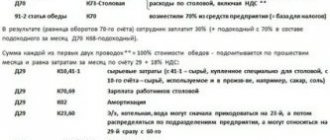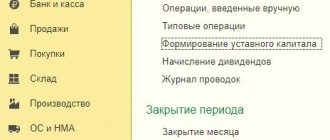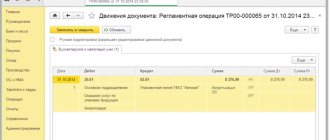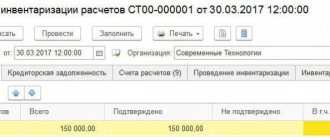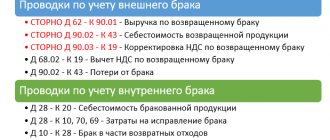Compensation for sick leave
The first common type of payment included in social insurance calculations is sick leave. In general, the employer pays for 3 days of sick leave at his own expense. Payment of sick leave at the expense of the employer, as well as contributions, is included in production expenses.
The remaining days of sick leave are compensated by the Social Insurance Fund. There are several options for such compensation:
- Reducing the calculated amount of contributions by the amount of employer expenses subject to compensation (clause 2 of Article 431 of the Tax Code of the Russian Federation).
The employer's expenses for paying for the first 3 days of sick leave cannot be used to reduce insurance premiums. If necessary, they can be included in the reduction of the tax base - like other expenses (clause 1 of Article 264 of the Tax Code of the Russian Federation).
Thus, the norms established by paragraph 2 of Art. 431 of the Tax Code of the Russian Federation, in fact, do not apply to employers in the regions included in the FSS Pilot Project, within the framework of which employees receive sick pay, starting from the 4th day of sick leave, from the FSS directly, without the participation of the employer.
- Offsetting the employer's overpayment against the payment of upcoming contributions (clause 9 of Article 431 of the Tax Code of the Russian Federation).
There is no need to prepare a separate application for such offset (Letter of the Federal Tax Service of Russia dated May 31, 2017 No. GD-4-8/10264).
In accounting, overpayments are not shown as separate entries. It can be indirectly traced by the fact that even when contributions are calculated (correspondence Dt 20 KT 69.11), before transferring them to the budget (correspondence Dt 69.11 KT 51) an amount will be shown that is less than the accrued amount (or it will not be there at all if contributions are less than expenses ).
- Return of funds from the Social Insurance Fund to the policyholder - corresponding to the difference between the employer’s expenses and contributions (clauses 2 and 3 of Article 4.6 of Law No. 255-FZ).
Such compensation can only be used if the first and second were applied before it, and there is still an amount remaining in excess of expenses over contributions.
Accounting for sick leave: examples
Let's look at how the schemes we've discussed are applied using examples. Let's highlight 2 main scenarios:
- when contributions are greater than the reimbursable costs of hospital benefits;
- when contributions are less than these expenses.
Example 1
Contributions exceed reimbursable sick leave expenses.
Ivanov A.M. went on sick leave. The employer will pay him at his own expense an allowance for the first 3 days in the amount of 12,000 rubles, and then at the expense of the Social Insurance Fund for 4 days - 16,000 rubles.
This will be shown in the ledgers by the following entries:
- DT 20 CT 70 - 12,000 - sick leave accrued at the expense of the employer;
- DT 69.11 CT 70 - 16,000 - sick leave accrued at the expense of the Social Insurance Fund;
- DT 70 CT 51 - 28,000 - sick leave paid to Ivanov.
Let’s agree that the employer must pay contributions in the amount of 25,000 rubles. But he reduces them by reimbursing the Social Insurance Fund - that is, in the end he pays contributions in an amount that is reduced by 16,000 rubles: it will be equal to 9,000 rubles.
This is shown by the wiring:
- DT 20 CT 69.11 - 25,000 - contributions accrued;
- DT 69.11 CT 51 - 9,000 (25,000 minus 16,000) - contributions are transferred in an amount corresponding to the difference between accrued contributions and FSS reimbursement.
Example 2
Contributions are less than sick leave costs.
Petrov V.S., whose salary is the same as Ivanov’s, went on sick leave, and was ill not for 7 days, but for 11. Accordingly, the Social Insurance Fund must reimburse not 16,000 rubles for 4 days, but twice as much - 32,000 rubles in 8 days.
In this case, the employer:
- will pay Petrov 3 days of sick leave at his own expense (DT 20 CT 70 - 12,000 rubles);
- will reflect the fact of compensation for 8 days of sick leave from the Social Insurance Fund (DT 69.11 CT 70 - 32,000 rubles);
- will pay sick leave to Petrov (DT 70 CT 51 - 44,000 rubles);
- will accrue contributions in nominal amounts (DT 20 CT 69.11 - 25,000 rubles);
- will issue a refund of contributions from the Social Insurance Fund - corresponding to the difference between the Social Insurance Fund debt and nominal contributions (DT 51 KT 69.11 - 7,000 rubles (32,000 minus 25,000)).
If the employee does not have a common illness, but an industrial injury, then the interaction between the employer and the Social Insurance Fund is carried out in a generally similar way, despite the fact that it is under the jurisdiction of another regulatory act - Law No. 125-FZ.
Thus, the employer has the right to reduce the calculated insurance premiums for payments for work-related injuries reimbursed by the Social Insurance Fund (clause 7 and clause 8 of Article 22.1 of Law No. 125-FZ). At the same time, various scenarios for the return of funds are provided (clause 6, clauses 11-18 of Article 26.12 of Law No. 125-FZ).
Example 3
Stepanov A.K. received an industrial injury. His employer:
- will accrue sick leave to him, which is fully reimbursed by the Social Insurance Fund (DT 69.12 CT 70);
- will pay sick leave (DT 70 CT 51).
For contributions (offset, return of excess expenses over contributions), entries are made according to a principle similar to that applied in entries in subaccount 69.11. Only in the case under consideration will subaccount 69.12 be applied.
Classification of PPE
PPE is clothing, shoes, items, devices issued to employees for personal use, in order to reduce (prevent) the impact on the human body of a wide range of harmful or dangerous factors when working in production (according to the text of Project No. 290n of the Ministry of Social Development dated 01-06- 09).
Question: How to reflect in the accounting of an organization that is on the general taxation system and uses the accrual method, transactions for the acquisition of special clothing manufactured in the territory of the Russian Federation, the payment of which is financed by the Social Insurance Fund of the Russian Federation (FSS RF) from the amounts of insurance contributions for compulsory social insurance against accidents cases at work and occupational diseases? View answer
When choosing PPE, it is advisable to be guided by two regulatory documents:
- technical regulations of the Customs Union “On the safety of personal protective equipment” TR CU 019/2011;
- GOST 12.4.011-89.
TR CU 019/2011 divides PPE into categories according to their protective properties, taking into account chemical, biological, mechanical, radiation, and temperature factors. In addition, protection against electricity, special signal clothing (to increase the visibility of workers), and skin protection are mentioned. Attention is also paid to complex PPE used in case of potential exposure to several harmful factors.
compensation for the costs of workwear from the Federal Social Insurance Fund of the Russian Federation in tax accounting ?
GOST 12.4.011-89 considers protective equipment from the point of view of their purpose:
- insulating suits, workwear;
- protective equipment for hands, feet, respiratory organs, head, face, eyesight, hearing, skin;
- PPE to prevent falls during work at height;
- comprehensive protective PPE.
In accordance with this classification, compensation can be obtained for the purchase of PPE only for employees in certain jobs.
On a note! Before purchasing any PPE, it is advisable to consult with FSS specialists. In this case, the likelihood of denial of compensation for expenses can be minimized.
Reimbursement of child benefits
The next type of reimbursement from the Social Insurance Fund is maternity benefits, as well as child care benefits. The principles of interaction between the employer and the Social Insurance Fund regarding such payments are generally similar to those that characterize calculations when paying sick leave.
The main feature of these benefits is that the Social Insurance Fund fully reimburses the employer’s expenses for them. Moreover, as a rule, in “real” money, and not by offset of contributions - also because these funds are usually much larger than the calculated contributions, which it makes sense to reimburse for relatively small amounts of sick leave.
Child benefits: postings
Maternity benefits are fully compensated by the Social Insurance Fund. But first the employer:
- accrues it (DT 69.11 CT 70);
- pays (DT 70 CT 51).
And then the FSS reimburses the benefit (DT 51 CT 69.11).
Child care benefits for children under 3 years old in the amount of 50 rubles are fully paid by the employer. These payments are reflected in accounting transactions:
- DT 20 CT 70 (benefits accrued);
- DT 70 CT 51 (benefits paid).
Since 2022, the procedure for financial support for citizens with children under 3 years of age has changed: the state has decided that mothers on parental leave should receive not 50 rubles a month, but an amount of money corresponding to the subsistence level.
However, this initiative will not directly affect the activities of employers; this should be discussed separately.
New child benefit scheme
As such, the child care benefit for children under 3 years of age, regulated by Decree of the President of Russia dated May 30, 1994 No. 1110, will remain the same: its amount will be 50 rubles, and employers will continue to pay it.
A completely different allowance will be paid in the amount of the subsistence minimum - in connection with the birth of a child, established for parents of children born after 01/01/2018 (and assigned if the income per person in the family is below twice the subsistence level for the working-age population).
This benefit is established by Law No. 418-FZ dated December 28, 2017. It is paid in full by the Social Insurance Fund without the participation of the employer. Initially, the benefit was intended for children under 1.5 years of age. From 2022, it will be assigned to children under 3 years of age - hence the analogy with parental leave benefits.
In fact, parents of children born after 01/01/2018 will receive two benefits - the first from the employer in the amount of 50 rubles, the second (if the family income is low) - from the state in the amount of the subsistence minimum for children.
Conditions for purchasing PPE at the expense of the Social Insurance Fund
Expecting to receive compensation when purchasing personal protective equipment, it is necessary to agree on the transaction with the FSS authorities, first of all, on the amount.
Compensation can be received in two ways.
Participants in the pilot project for financing social benefits purchase personal protective equipment using their own financial resources. Today these are regions such as the Karachay-Cherkess Republic, Nizhny Novgorod region, Rostov region, Crimea and Sevastopol, Adygea, Altai, etc. The full list of participants is given in Government Decree No. 294 dated April 21, 2011. Expenses can be reimbursed by the Fund in the amount , agreed upon by the parties. The policyholder applies to the Fund before December 15 of the corresponding year with an application, to which documents confirming expenses are attached. The application form is approved by the Ministry of Labor and agreed with the Social Insurance Fund. The decision to transfer funds is made within 5 working days after submitting the documents.
Organizations that are not participating in the pilot project can receive a credit for the funds spent on the purchase of personal protective equipment against the amount of the payment of “injury” contributions. To do this, you should contact the Social Insurance Fund and obtain official permission to purchase PPE before it is carried out. The provision of personal protective equipment is part of preventive measures to reduce injuries and occupational diseases. The full regulations under which compensation is provided are contained in the Rules for the financial support of such measures No. 580n dated 10-12-12 of the Ministry of Labor. The rules stipulate that the amount of funding for preventive measures in the current year should not exceed 20% of the amount of contributions “for injuries” of the previous year, minus the amounts spent on the same item of expenditure in the previous year.
If over the past two years the organization has not applied for compensation for preventive measures, then the amount of contributions for the three previous years and the same interest rate are taken into account. In addition, the organization can count on payments no higher than the amounts transferred to the Social Insurance Fund in the current year. An application must be submitted to the Fund no later than August 7 of the current year.
2018 brought a number of changes to the procedure for reimbursement of expenses for personal protective equipment by the Social Insurance Fund. They were announced by order No. 764n dated 10/31/17 of the Ministry of Labor. Now compensation includes the purchase of workwear and other personal protective equipment made only in Russia. A copy of the conclusion confirming that the products are made from domestic materials on the territory of the Russian Federation, issued by the Ministry of Industry and Trade, is taken from the seller.
The following must be attached to the application for compensation for personal protective equipment:
- financial plan and list of activities according to this plan to ensure preventive measures;
- a list of PPE and professions (positions), indicating the standards for their issuance and the amount of funds issued. Their characteristics are indicated: expiration date, cost, etc.;
- copies of certificates (declarations) confirming the compliance of protective equipment with technical regulations under the Customs Union TR CU 019/2011 approved. 09-12-2011 by decision of its commission No. 878;
- copies of documents indicating the Russian origin of PPE (this innovation was discussed above).
It is advisable to check the full list of documents and their current forms (forms) at the Fund’s branch. Note that the FSS has also released Method. Recommendations for applying for PPE funding as part of preventive measures. They are published on the FSS website and contain detailed information on the topic.
On a note! The Social Insurance Fund may refuse compensation if the organization has overdue debts, penalties, fines, or the submitted package of documents contains inaccurate data. Refusal may also occur due to the full distribution of the Fund's budget in a certain period.
Providing funds for spa treatment
The Social Insurance Fund may provide the employer with funds for sanatorium and resort treatment of the employee - in the manner established by the Rules, approved. By order of the Ministry of Labor of Russia dated December 10, 2012 No. 580n. In this case, the voucher can be paid both without the employee’s financial participation, and with partial payment.
The employer most often receives funds from the Social Insurance Fund as part of the social support measure under consideration as targeted financing. And therefore, their receipt will be reflected on account 86 (in correspondence with account 76 - where settlements with employees that are not directly related to the employment contract are reflected):
- DT 76 CT 86.
The posting amount is the actual amount of money subject to compensation from the Social Insurance Fund (it may be less than the nominal price of the voucher if it is partially paid by the employee).
The amount to be reimbursed can be used to reduce the debt on insurance premiums:
- DT 69.12 CT 76.
Since the funding is targeted, the organization is obliged to actually purchase vouchers and register them. If they are brought by courier, then they are registered as a monetary document:
- DT 50.3 CT 76.
The transaction amount will correspond to the full price of the trip.
Payment for the trip to the seller will be reflected by the following posting:
- DT 76 CT 51.
We've sorted out the wiring, let's move on to documentation
Step 1
Provide the FSS with correctly completed primary documents confirming the fact of the special assessment. It would be a good idea to check with your local Social Insurance Fund for a complete list of documents. And wait for the amount to be agreed upon from the Fund.
Step 2
Fill out the 4-FSS report. The amount to be reimbursed is reflected in the report starting from the reporting period in which the special assessment was carried out. In the 4-FSS report, the specified amount is reflected in the following order:
- Table 8, line 9 is equal to the costs of financing preventive measures to reduce industrial injuries and occupational diseases.
- table 7 line 11 is equal to the total amount of expenses for compulsory social insurance against accidents at work and occupational diseases.
- table 7 line 9 is equal to the amount of debt for the Social Insurance Fund if expenses exceeded the amount of accrued contributions.
- The FSS debt at the end of the year is transferred to the overpayment for the next year. This debt is indicated in line 10 of table 7 of the 4-FSS report for the reporting periods of the next year.

